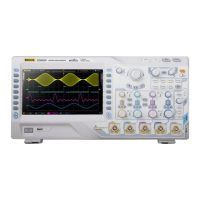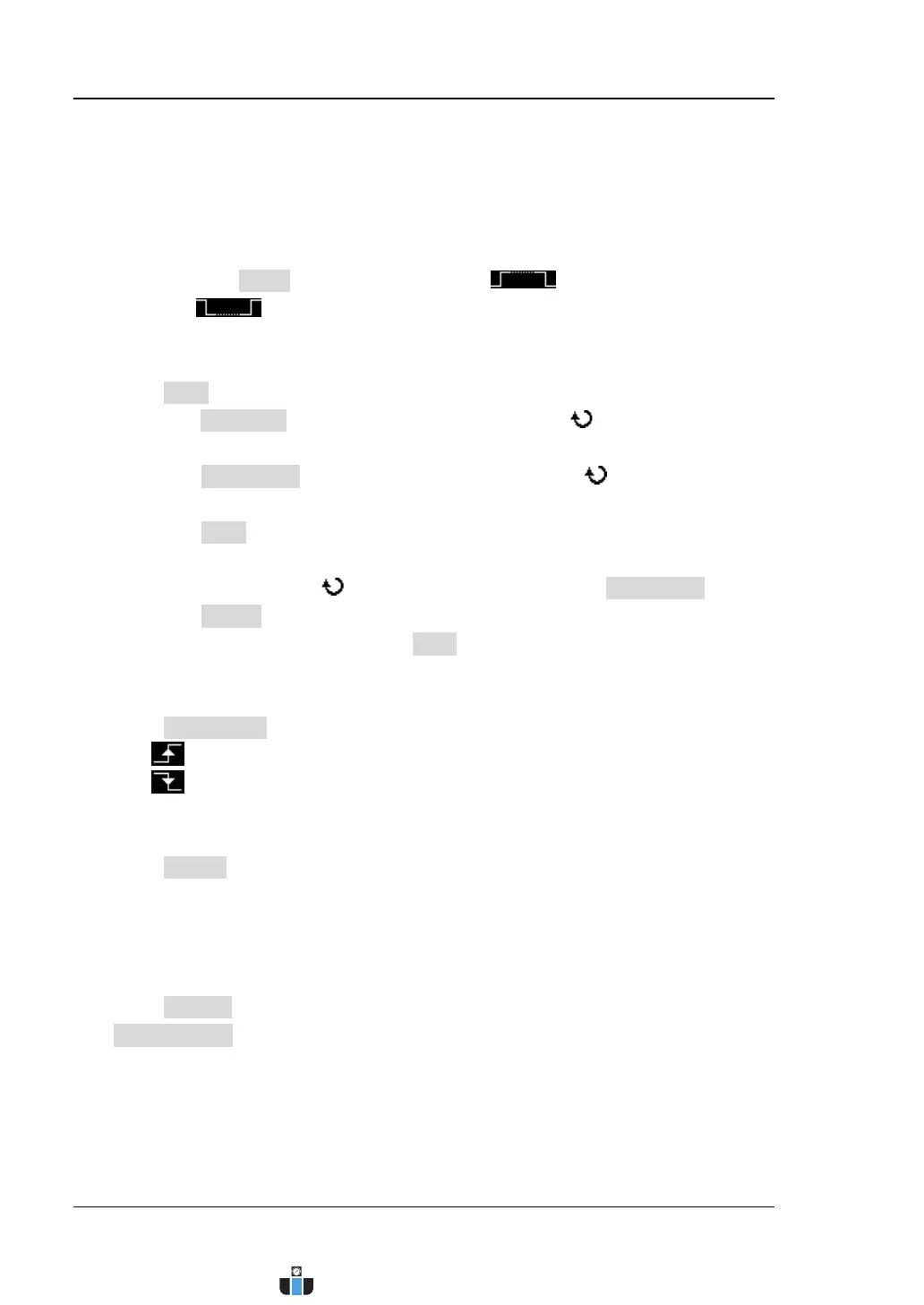RIGOL Chapter 5 Trigger
5-44 MSO4000/DS4000 User’s Guide
currently selected is displayed at the upper-right side of the screen.
Note: Channels that are turned off can also be selected as the signal
source of the CS line.
b. Press Mode to set the CS mode to “ ” (high level is valid) or
“
” (low level is valid).
4. Set the data
Press Data to enter the data setting submenu of SPI trigger. In the submenu:
Press Data Bits and turn the multi-function knob to set the number of
bits of the serial data string. It can be any integer between 4 and 32.
Press CurrentBit and turn the multi-function knob to select the bit to
be operated. The range is from 0 to (the current “Data Bits” -1).
Press Data to set the data pattern of the current data bit to H, L or X. You
can also switch the data pattern of the current data bit by pressing the
multi-function knob continuously after you set the CurrentBit.
Press AllBits to set the patterns of all the bits to the pattern of the current
data bit (namely the pattern in Data).
5. Specify the clock edge
Press Clock Edge to select the desired clock edge.
: sample the SDA data on the rising edge of the SCL clock.
: sample the SDA data on the falling edge of the SCL clock.
6. Specify the trigger mode
Press Sweep to select “Auto”, “Normal” or “Single” (please refer to “Trigger
Mode”). The corresponding status light of the trigger mode currently selected in
the trigger control area (TRIGGER) at the front panel turns on.
7. Turn the noise rejection on or off
Press Setting to enter the trigger setting submenu. In this submenu, press
Noise Reject to turn the noise rejection on or off (please refer to “Noise
Rejection”).
Note: When the clock line signal source or/and data line signal source are set to
D0 to D15, the noise rejection is invalid.
www.calcert.com sales@calcert.com1.800.544.2843
0
5
10
15
20
25
30

